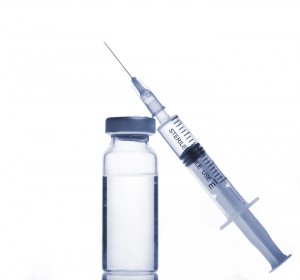Trending
BO.TOX (n.): A second shot or something to frown at?
December, 2015
| Chances are if you’ve looked at a celebrity tabloid in the last five years, you’re familiar with the word Botox. But even though its name is a familiar part of our everyday lexicon, many of us aren’t really sure what Botox is. To help demystify it, here are a few notes about its common uses and what it’s made from. |

What is it?
Botox is the brand name of a toxin produced by the bacterium Clostridium botulinum, called botulinum toxin. Although the general public uses the term Botox to refer to all products that utilize botulinum toxin, the toxin is also found in products that go by these brand names: Dysport, Myobloc and Xeomin.
How does it work?
Botulinum toxin blocks certain chemical signals from the nerves to the muscles—mostly signals that cause muscles to contract. Small, diluted amounts of the botulinum toxin is injected into specific muscles so that the muscles can no longer contract, which causes the wrinkles to relax and soften.
What has it been used to treat?
Although Botox is best-known to the masses for its ability to reduce the appearance of some facial wrinkles, it is also used medically to treat certain muscular conditions, such as chronic migraines, excessive sweating, repetitive neck spasms, overactive bladders and uncontrollable blinking.
How does it work on wrinkles?
The botulinum toxin temporarily relaxes the facial muscles that cause wrinkles, such as crow’s feet, frown lines and forehead furrows.
Wrinkles caused by sun damage and gravity will not respond to Botox.
How is the cosmetic procedure performed?
The botulinum toxin is injected with a needle into specific muscles. The number of injections needed is determined by the extent of the area being treated.
Does it hurt?
Most people easily tolerate the discomfort of the injection. But there are creams, sprays and injections to numb the skin beforehand. No anesthesia is required.
How long does it last?
It generally takes 3 to 7 days for the botulinum toxin to take effect. Depending on the problem being treated, the effect may last between 3 and 12 months. As muscle action gradually returns, the lines and wrinkles begin to reappear.
Are there side effects?
The most common side effects reported after cosmetic treatments of Botox include bruising or swelling at the injection site, numbness, muscle twitching, headaches and flu-like symptoms.
Other side effects, caused by the botulinum toxin spreading to adjacent tissues, include dry eyes or excessive tearing, droopy eyelids and droopy or cockeyed eyebrows.
There is also the risk that the botulinum toxin may spread to other parts of the body and cause botulism-like symptoms, such as vision problems, difficulty swallowing or speaking, loss of bladder control, trouble breathing and general muscle weakness all over the body. t8n













